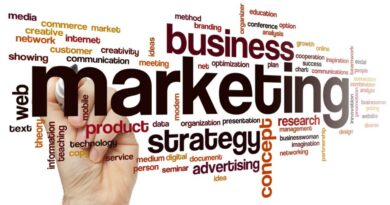Business Operating Environment of Coca-Cola and Pepsi
1 The ever changing business environment has seen many companies put up various measures to stay in operation. Business environment consists of internal and external forces that exert pressure on its operations. The internal business environment consists of the factors within an organization that can be manipulated and controlled by the management for the benefit of the organization. On the other hand, external environment consists of legislative actions, economic conditions and social forces that a business has no direct control. This paper seeks to compare and contrast the elements in business operations that affect the Coca-Cola Company and Pepsi Company. These companies operate in the beverage industry, and are among the market leaders. The intense rivalry between Coca-Cola and Pepsi has dated back in years, often termed as ‘the cola wars’, which has resulted in locking out other lesser competitors in the industry. An analysis of the environment in which they operate is given and compared to their performance.
Legal, social and economic environment
These are the external forces that have a great impact to the operations of organizations. The Coca-Cola Company is the world’s leader in the beverage industry. The company produces beverage bases and concentrates that are used its bottling subsidiaries all over the world for distribution. According to Kotler (1998), PESTLE (Political, Economic, Social, Technological and Legal Environment) of a company can be used to analyze environmental factors that exert pressure on an organization. Both coca-cola and Pepsi operate in the same legal and economic environments. The legal environment consists of laws, groups of people and government agencies that have a regulatory effect on organizations. The recent alert by the European commission to its member states to ban Coca-cola drinks due to the poisoning of 100 children in Belgium as a result of bad carbon dioxide in its soft drinks is an example of legal battle that the company has to face.
Social environment includes changing attitudes and lifestyles. The changing lifestyles in the US population have led to the production of soft drinks that has an aspect of time management. Coca-cola has increased its production of bottled water and diet colas due to a large number of individuals that have switched from beer consumption.
In recent times, the world economic crisis has led to the slow down in growth of many companies in the United States. Coca-Cola produces consumer products and therefore very sensitive to consumers disposable income. Due to this, the Coca-Cola management highlighted trends that would be used to shape its planning. According to the report, consumers perceive the soft drinks as inexpensive and therefore even if there would be a decline in the disposable income, consumers are unlikely to forego soft drinks.
The adverse effects of a poor economy saw Pepsi announce the cutting of 3300 jobs in 2008, about 1.8% of its workforce to reduce its operational costs. Unlike the outlook of Coca-Cola, Pepsi indicated that adverse economic conditions reduced their sales due to the decline in consumption of soft drinks.
Managerial, operational and financial issues
Company culture and performance
Organizational culture can be defined as a system of values, beliefs, norms and unique personalities that characterizes an organization, Gareth (2008). Coca- cola strongly believes in its people and brand as characterized in its seven core values i.e. leadership, passion, integrity, collaboration,, diversity, quality and accountability. Coca-cola invests greatly in its people; management, staff, customers and in its brand. Pepsi has a culture of professionalism and fun at workplace. The employees of the company are at liberty to pursue personal goals as long as they incorporate them with the goals of the organization. Pepsi also strongly emphasizes on diversity of its workforce. Equal opportunity is given for recruits from diverse races, as well as an opportunity for growth in ones career. The organizational culture creates cohesion and identity in a company, so that there is a synergy effect in achieving g the organizational goal.
Performance measurement and appraisal is a key yardstick in determining then effectiveness and efficiency of employees and the returns on the invested capital. Both the companies under discussion conducts periodic employee performance appraisal. The evaluation is done on monthly, quarterly, semi-annually and on an annual basis. Those who are found to have performed better than the set targets are recognized and rewarded.
Promotion policy
Promotion is involved with the process of creating awareness about goods or services to the potential consumers with a short run or long run goal of increasing sales. The Coca-Cola company use incentives in its promotion plan top increase its sales. Middlemen and retailers are given incentives and free samples so as to attract them. Through the ‘seen as sold’ perception among the consumers, the presence of more Coca-Cola products in the market expands the market share. Other promotional strategies include getting shelf spaces in eye-catching positions, sponsorships and endorsement.
Like Coca-Cola, Pepsi uses similar promotion policy to reach its market and increase its sales. It uses celebrity endorsements and sponsorships to reach the younger age of its market.
Strategic decision making
Strategic decisions are long-term unstructured decision made by the top level management in a company. At Coca-Cola, it is the directors of the company that makes strategic decisions. These decisions include growth and expansion into foreign markets, large capital investment decisions, cessation of operations among others. When Coca-Cola undertook to rebrand to “new coke’’ many criticisms were brought up, this decision made by the management would bring the company’s market share down and give its competitor- Pepsi- an advantage.
Similar to Coca-Cola, PepsiCo’s strategic decisions are made by its Board of Directors, which is comprised of one executive director and twelve independent outside directors.
Management, leadership and communication
Leadership can be defined as the process by which an individual influences others through inspiration and motivation. The subjects then direct their activities towards achieving organizational goals, Gareth (2008). A management style consists of all the methods of leadership that are used by a manager to administer his subjects.
The Coca-Cola Company uses different management styles in its various departments;
Democratic style- in this type of management style, all the managers, junior managers and staff are involved in the generation of new ideas. The new ideas are subjected to discussion and a final decision made after involvement of the parties involved in the generation process. In consultative democratic style, managers of the company allow employees to generate new ideas, but then, the ideas are taken to the managers who evaluate them and make the final decision. The Coca-Cola Company adopts this style of leadership so as to enable the employees set their own realistic goals. Once set by respective employees, these goals become a challenge and source of motivation to the employee.
Coca-Cola’s management by objectives- This process of management emphasizes on the role of leadership and communication in an organization and business control. In this process, managers are managed instead of managing the entire workforce. The company uses the three basic elements to manage by objectives; it identifies the agreed goals by the manager and subordinate, defines the subordinate’s responsibilities based on the set goals and then use the agreed goals and responsibility to monitor and evaluate the performance.
The Pepsi Company, on the other hand uses to a larger extend consensus management style to run its operations. In this type of management, the decision is reached by the group, whereby there is total commitment to the decision made by all the members involved. In order to reach a consensus, the participating group must be strongly motivated to achieve the missions, goals and future of the organization. Although this type of management and decision making is time consuming, demands dedication and is based upon the assumption that people are honest and competent, PepsiCo has been successful in using it.
Coca cola and Pepsi both use the open style of communication where the management and staff are free to communicate with each other. This enables issues facing the company to be aired and tackled within the earliest time possible. In marketing communication strategy, the internet has been of great use in the two companies.
Use of SWOT tools
The SWOT (Strengths, Weakness, Opportunities and Threats) analysis is tool used by managers to determine strengths, weaknesses, opportunities and threats. Strong and weak points of a business can be controlled by the managers and therefore are internal factors. Organizational strengths can be used to the advantage of a business while its weakness can be used to plan and avoid pitfalls. Opportunities and threats are external forces that a business can not control directly.
Coca cola SWOT analysis
Strengths
- The Coca-Cola brand enjoys a high-profile worldwide presence
- It has a broad-based bottling strategy.
- It has four among the top five leading brands.
- It has a 47% of global volume in carbonates sales.
Weaknesses
- There is over-complexity of how Coca-Cola relates within bottlers in America and other countries
- There is a decline in the carbonate sales.
- The distribution system that it has currently is not efficient for non carbonates.
Opportunity
- Well placed brands like minute maid in the ‘Health concerned’ market.
- Distribution strengths in Europe and Latin America.
Threats
- PepsiCo’s Tropicana, Aquafina and Gatorade are stronger brands.
- India’s protest against coke.
- Negative publicity in Western Europe.
PepsiCo’s SWOT analysis
Strengths
- Owns the worlds 2nd best selling brands.
- Constant product innovation.
- Celebrity endorsements marketing strategy.
- High profile global presence.
Weaknesses
- Decline in carbonates market.
- Only targets the young.
Opportunities
- Increase sells for the growing healthier beverages markets.
- Increased consumer concerns with drinking water.
Threats
- Coca-Cola’s increased marketing and innovation spending.
- Obesity concerns.
- Over reliance on America and European markets.
- Operations strategy and framework
Operations strategy is defined as a pattern of decisions that are made by managers, which are meant to shape the long-term capabilities of operations and their contribution to the overall strategy through matching market requirements to the organization resources, Slack & Lewis, (2008).
The Coca-Cola Company strategizes on increasing regional operations while centralizing the concentrate production facility that reduces the manufacturing costs. The objective of its bottling investment is to ensure that its production, distribution and marketing channels are the strongest in their operation and most efficient in resource utilization, so as to optimize on long-term sales, cash flow and shareholders equity, (Pearce, 1994). The Pepsi Company has been successful in continuous innovation in its products. Introduction of new products that suits the unique customer needs has made Pepsi a major threat to the operations of the Coca-Cola Company.
Impact of changes in external conditions
Both the Coca-Cola and Pepsi companies operate in similar external environments. The external forces that exert pressure on the beverage industry include the legislations and economic forces. During the global economic crisis, there was a strain in the operations of firms. The cost of production went up, accelerated by the increase in fuel costs and inflation.
The protests in India against Coca-Cola operations had a negative effect on the company including reduced sales and negative publicity.
References
Lewis, M. & Slack, N. (2008). Operations strategy (2nd edition). FT Prentice-Hall.
Pearce, A. and Robinson B. (1994). “Strategic Management: Formulation, Implementation, and Control”. Irwin.
Goreth R. Jones and Jennifer M. George (2008). Contemporary management. Retrieved from (http://www.ehow.com/about_5386863_definition-leadership-theories.html)
New York times (10.14.2008). Pepsi to cut 3,300 jobs as weak economy hits soft drink sales Retrieved on 23rd May 2012 from http://www.nytimes.com/2008/10/14/business/worldbusiness/14iht-pepsi.4.16948270.html?_r=1




